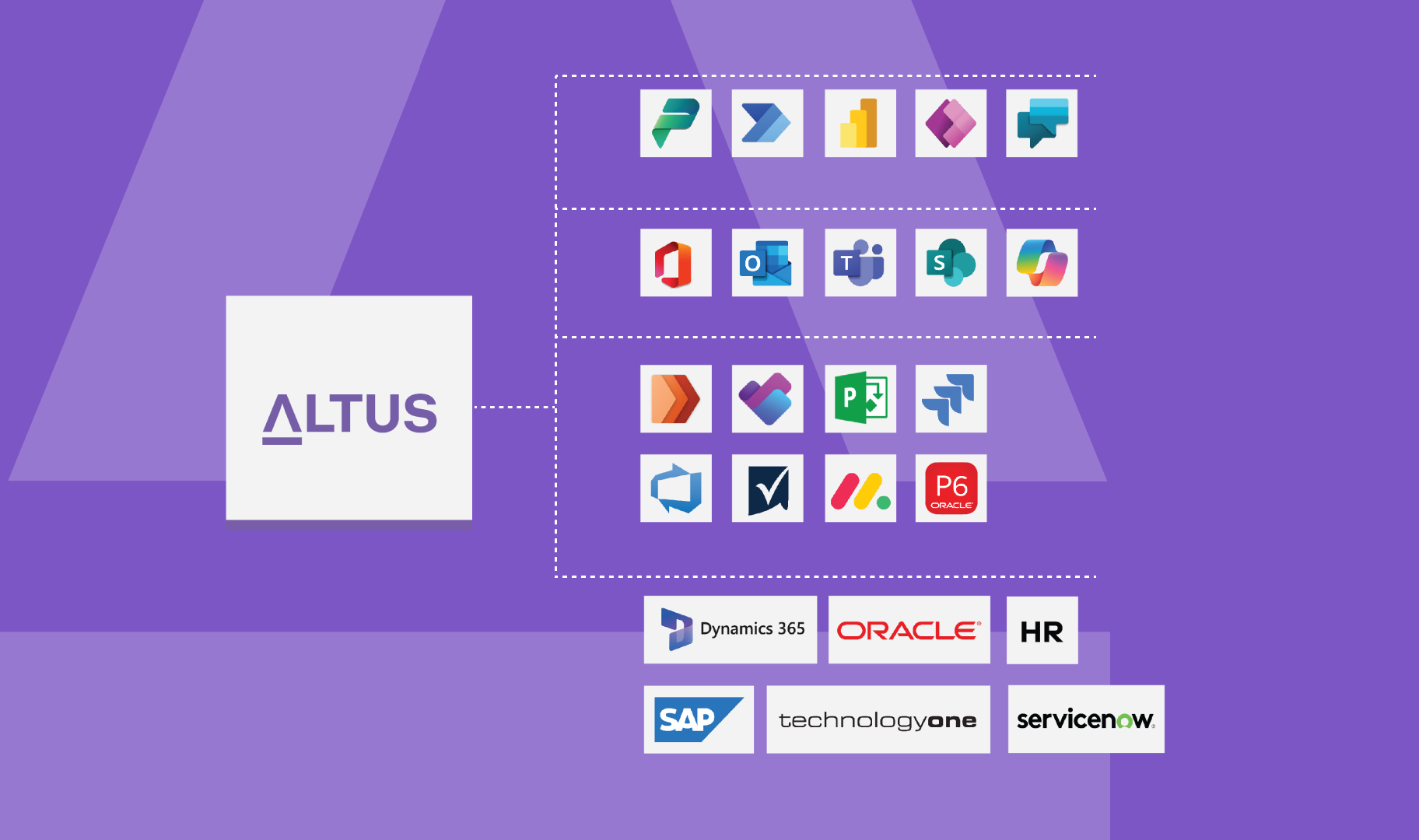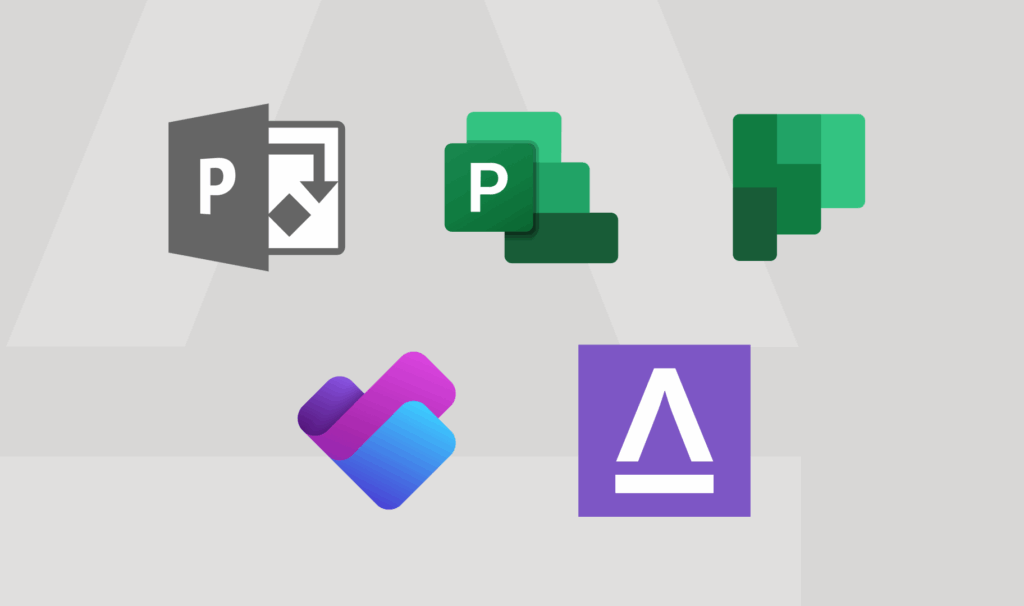The modern Project Management Office faces mounting pressure to deliver projects on time, within budget, and with complete visibility to leadership. The days of managing complex portfolios through spreadsheets and manual processes are rapidly disappearing.
Modern PMO professionals face a dilemma. They need sophisticated tools that provide real-time insights, and draw on reliable data from existing business systems. But they also need don’t want these capabilities to add bloated operational processes and heavy administrative burden.
PMO tools have evolved from simple tracking documents to comprehensive platforms that transform how organisations manage their project portfolios. These solutions don’t just organise data—they empower strategic decision-making. So PMOs can enhance resource allocation, and create the executive visibility that drives business success.
In this guide we’ll explore the essential components of a modern PMO tech stack, helping you navigate the landscape of available solutions and build a toolkit that meets your unique requirements.
Essential features and capabilities for modern PMO tools
Real-time reporting and dashboards
Executive leadership demands immediate access to project status, resource utilisation, and performance metrics. Modern PMO tools provide dynamic dashboards that update automatically, eliminating the time-consuming process of manual report generation. These systems can reduce reporting time by up to 90%, freeing PMO professionals to focus on strategic activities rather than data compilation.
Effective reporting features include customisable executive dashboards, automated status updates, and drill-down capabilities that allow users to examine high-level metrics and detailed project information within the same interface.
Resource management and allocation
Optimal resource utilisation remains one of the most challenging aspects of portfolio management. Advanced PMO tools offer sophisticated resource planning capabilities that provide visibility into team capacity, skill availability, and workload distribution across the entire organisation.
These systems help identify resource conflicts before they impact project delivery, enable better workforce planning, and support data-driven decisions about project prioritisation and resource investment.
Integration capabilities
PMO tools must work seamlessly with existing business systems to be truly effective. Integration with Microsoft Suite, financial systems, and other enterprise applications ensures data consistency and eliminates the need for duplicate data entry.
Seamless integration capabilities reduce implementation friction and support higher user adoption rates, as team members can continue working within familiar environments whilst benefiting from enhanced PMO functionality.
Portfolio planning and strategy alignment
Modern PMO tools connect individual projects to broader organisational objectives, providing clear visibility into how project outcomes support strategic goals. This alignment capability helps executives make informed decisions about project investments and portfolio optimisation.
Strategic alignment features typically include goal mapping, portfolio scoring mechanisms, and scenario planning tools that support strategic decision-making processes.
Leading PMO tools in the market
Comprehensive portfolio platforms
Several platforms offer end-to-end portfolio management capabilities designed specifically for PMO environments. These solutions typically include project planning, resource management, financial tracking, and executive reporting within integrated environments.
Altus represents this category well, providing PMO professionals with intuitive interfaces, real-time insights, and seamless integration capabilities that support both small-scale projects and enterprise-wide implementations.
Specialised resource management tools
Some organisations benefit from focused tools that excel in specific areas like resource planning or capacity management. These solutions often integrate with broader project management platforms to create comprehensive PMO ecosystems.
Financial and budgeting solutions
Budget tracking and financial reporting require specialised functionality that many PMO professionals consider essential. Tools in this category focus on project financials, cost tracking, and budget variance analysis.
Choosing the right PMO tool for your organisation
Assess your current state
Begin by evaluating your existing processes, identifying pain points, and understanding the specific challenges your PMO faces. Consider factors like project complexity, team size, reporting requirements, and integration needs.
Document your current manual processes and quantify the time spent on activities like report generation, resource planning, and status tracking. This baseline will help you measure the impact of new tools and justify investment decisions.
Define success criteria
Establish clear metrics for evaluating PMO tool effectiveness. Common success indicators include reduced reporting time, improved resource allocation accuracy, increased project visibility, and higher user adoption rates.
Consider both quantitative metrics (time savings, cost reductions) and qualitative benefits (improved decision-making, enhanced strategic alignment) when defining success criteria.
Pilot and evaluate
Most successful PMO tool implementations begin with pilot programmes that test functionality with a subset of projects or teams. This approach allows you to validate tool capabilities, identify integration challenges, and refine processes before full-scale deployment.
Design your pilot programme to test the most critical functionality first, focusing on features that address your primary pain points and deliver the highest value.
Implementation best practices
Plan for change management
Successful PMO tool implementation requires more than technical setup—it demands careful attention to change management and user adoption. Develop comprehensive training programmes and provide ongoing support to ensure team members can effectively utilise new capabilities.
Consider appointing PMO tool champions within different teams who can provide peer support and help drive adoption across the organisation.
Start with core functionality
Avoid the temptation to implement every available feature immediately. Focus on core functionality that addresses your most pressing needs, then gradually expand usage as teams become comfortable with the new system.
This phased approach reduces complexity, minimises user overwhelm, and allows you to demonstrate early wins that build momentum for broader adoption.
Maintain data quality
PMO tools are only as effective as the data they contain. Establish clear data governance processes, define data entry standards, and implement regular data quality reviews to ensure your system provides reliable insights.
Consider automation opportunities that can reduce manual data entry requirements while maintaining data accuracy and consistency.
Future trends in PMO tools
Artificial intelligence and automation
AI capabilities are increasingly appearing in PMO tools, offering features like predictive analytics, automated risk identification, and intelligent resource recommendations. These capabilities can help PMO professionals identify potential issues before they impact project delivery.
Enhanced mobile capabilities
Mobile functionality continues to improve, enabling project team members to update status, report issues, and access project information from any location. This mobility supports more dynamic project environments and improves data timeliness.
Advanced analytics and insights
PMO tools are incorporating more sophisticated analytics capabilities that can identify patterns, predict outcomes, and recommend actions based on historical project data and current portfolio status.
Maximising project success with strategic PMO tools
Modern PMO tools represent far more than technological upgrades—they’re strategic investments that can transform how your organisation manages its project portfolio. The right combination of features, integration capabilities, and user-friendly design can streamline your processes, empower executive decisions, and create the real-time visibility that drives project success.
Success with PMO tools requires careful selection, thoughtful implementation, and ongoing attention to user adoption and data quality. organisations that approach PMO tool implementation strategically—focusing on core needs, planning for change, and measuring success—consistently achieve better outcomes than those that rush into complex implementations without proper preparation.
Consider starting your PMO tool journey with a focused evaluation of your current challenges and a clear vision of your desired outcomes. The investment in proper planning will pay dividends in improved efficiency, better decision-making, and ultimately, more successful project delivery.





